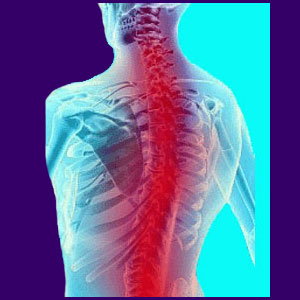
A spinal stenosis chiropractor is a complementary medical caregiver who specializes in treating the effects of certain types of central canal and neuroforaminal narrowing conditions. Chiropractic for spinal stenosis might not seem like a logical treatment choice, since most cases of central and neuroforaminal stenosis are enacted by factors inside the spinal anatomy that will not generally respond to conservative care. Even though chiropractic is limited in what it can achieve when treating particular types of stenosis, the therapy can be highly effectual in resolving other forms of canal impingement issues.
Spinal stenosis is a diverse condition which is described as a narrowing of the vertebral canal due to some blockage, obstruction or degenerative condition. It should be noted that spinal stenosis is typical to experience as a person ages, but the condition rarely reaches symptomatic degrees.
This essay details the benefits and limitations of using chiropractic adjustments to actively treat spinal stenosis.
Spinal Stenosis Chiropractor Background
There are many reasons for central stenosis to occur. There are permanent forms of stenosis that will not resolve naturally, or with conservative care, and there are transient forms of stenosis that might resolve without intervention or with nonsurgical therapy.
Permanent versions of stenosis include those caused by the osteoarthritic processes, those typically formed by spondylolisthesis, those enacted by scoliosis, abnormal skeletal-induced lordosis or abnormal skeletal-induced kyphosis and those of a congenital variety.
Temporary versions of stenotic changes include those that might be created by intervertebral disc pathologies and those that might result from some forms of ligamentous hypertrophy.
Chiropractors will treat all manner of stenosis concerns, but those of a permanent nature will rarely resolve, although some patients might benefit with decreased symptomology. Why these benefits might occur is speculative, but may be due to slight increases in canal patency from an adjustment, or quite possibly, be produced by placebo reaction.
Transient stenosis is the type of canal narrowing that might respond best to certain chiropractic interventions. In the section below, we will investigate why chiropractic may be able to help some temporary stenosis sufferers to find relief from their pain and neurological symptoms.
Transient Spinal Stenosis Chiropractor Treatment
General chiropractic modalities of spinal manipulation will not typically cure any type of stenotic blockage, nor even act significantly upon the symptoms of the condition. However, spinal adjustments might still prove beneficial for patients based on chiropractic claims to wellness maintenance and overall holistic effects.
The types of chiropractic techniques that are most effective for targeting transient stenosis include various forms of tractioning practices, such as the Cox Technique, and the implementation of modern nonsurgical spinal decompression systems, such as the DRX9000 or the AccuSpina machines.
These regimens of care can target some forms of temporary central and neuroforaminal stenosis and resolve the underlying causative issue when the canal narrowing is a result of a bulging disc or certain other specific types of processes.
Some chiropractors cite positive treatment results for permanent types of stenosis using these same modalities. However, there is less objective evidence showing benefits for arthritic stenosis, curvature-related stenosis or vertebral slippage-enacted stenosis, despite many subjective reports.
Patients who choose to utilize chiropractic to treat any form of stenosis should understand exactly what is wrong with their spines, so that they can make a determination on the type of care they will need in order to provide relief. Furthermore, patients with any type of stenosis should concentrate on finding a chiropractor who focuses on treating the condition, can provide patient references and utilizes the most innovative and effective methods of care, including Cox, DRX9000, AccuSpina, Vax-D, Antalgic Trak or other decompression system.
Chiropractor Warnings for Spinal Stenosis
There is indisputable medical evidence that compression of the spinal cord, from trauma, has the chance to cause increased symptoms or even paralysis in rare instances, for patients with severe central cervical canal stenosis. Therefore, patients are advised to consider chiropractors carefully, since some are known to be more heavy-handed with their adjustments than others.
We have seen many reports of documented injury, especially in patients who suffer from significant central cervical stenosis and also receive regular face-down neck adjustments using inward pressure, rather than rotational force. We have also seen cases involving lumbar stenosis patients who were injured by aggressive inward adjustments in the lower back region, as well.
It would be wise to consult with your neurologist before seeking chiropractic treatment for any central stenosis concern.
Spinal Stenosis Chiropractor Guidelines
Most stenosis patients, who receive regular chiropractic care, do cite some degree of positive benefit, including symptomatic reduction. However, in many cases, the mechanism that provides this relief is highly speculative and might be related more to the mindbody interactions than to a single universal structural boon bestowed.
We have received reports of many cures provided by chiropractic decompression modalities, but in virtually every case, the type of stenosis that was treated successfully was of a transient nature.
Most permanent stenosis requires invasive interventions to resolve, especially when spinal arthritis develops in the central canal to an extreme degree.
It should also be mentioned that the vast majority of diagnosed cases of stenosis are not verified as the actual source of pain, since mild to moderate versions of canal narrowing are almost always asymptomatic. Blaming stenosis for causing pain that is actually created by another process might really help to explain the relief seen by many stenosis patients who are under chiropractic care. This is sensible, since chiropractic is much more effective at providing relief or resolution for some spinal problems, than it is for others.
Our bottom line recommendation is as follows: As far as chiropractic for stenosis, learn the facts and consider giving it a try after talking to your neurologist. However do not place too much hope for a true cure, unless you are receiving targeted decompression therapy for a disc-related stenosis condition.





